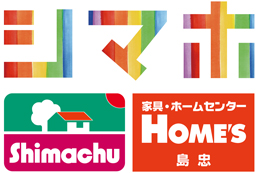

To Our Shareholders
In the fiscal year under review, the Japanese economy was on a moderate recovery trend against the backdrop of the government's economic stimulus package and its monetary policy amid the precarious international situation reflected in part by the trade friction between the U.S. and China and the Brexit issue in the U.K.; however, the economic outlook remained more uncertain than ever before as the economy sharply deteriorated due to the contraction in the economic activities in Japan and overseas hit by the spread of novel coronavirus disease (COVID-19).
In the retail business, consumers are doing more of their spending via retail channels outside physical stores, such as e-commerce and C2C used-goods marketplaces as consumer behavior changes, customers' lifestyles diversify, and competition is becoming increasingly tougher with companies entering the market from various other business sectors. Furthermore, the retail business faces a challenging operating environment, given the uncertainties of a prospect in terms of time for the convergence of the COVID-19 pandemic.
Against that backdrop, the Company has been pushing ahead with agendas; namely, store development, business format development, cost structure reform, and management infrastructure development, for the Structural Reform Projects formulated for the second year of the Medium-Term Management Plan 2021.
Regarding stores, the Company opened HOME'S FUJI MALL Fukiage (Konosu, Saitama Prefecture) in May 2020, HOME'S sleep LaLaport Fujimi (Fujimi, Saitama Prefecture) in July 2020, and closed the Kashiwa store (Kashiwa, Chiba Prefecture) in December 2019 and the Yokohama store (Yokohama, Kanagawa Prefecture) in August 2020. As a result, the number of stores at the end of the fiscal year under review stands at sixty stores. With respect to existing stores, the Company reopened HOME'S Tokorozawa (Tokorozawa, Saitama Prefecture) after renovating the floor space to make it roughly double the size in October 2019. Also, as part of the business format development, the Company renovated six stores to incorporate Daiso and two stores to introduce food product supermarket tenants.
In terms of capital investment and fund procurement, in the fiscal year under review, capital investment totaled ¥2,590 million, mostly in store construction fees related to new store openings and renovation fees for the existing stores, and all provided for with funds on hand.
As a result of the above, operating revenue for the fiscal year under review was ¥153,540 million (up 4.9 % year on year), operating profit was ¥9,598 million (up 6.7% year on year), ordinary profit was ¥10,094 million (up 10.4% year on year) and profit was ¥6,422 million (up 6.2% year on year).
With respect to our outlook and issues to be addressed, current demand has been expanding in the Company's business, while a new normal in people's lifestyles began to take hold and people are spending more time at home due to the COVID-19. The Company forecasts that the outlook for the furniture store and home center businesses remains unpredictable based on the variable factors, including the COVID-19 pandemic status and its impacts on the economy and private consumption.
Against that backdrop, the Company puts the safety and the security of all stakeholders first and foremost and will implement preventive measures to stop the spread of the COVID-19. The Company will also continue to press ahead with the Structural Reform Projects in the final year of the Medium-Term Management Plan 2021, as described below.
(1) Store development
- Renovate existing stores and proactively increase floor space.
- Reduce the number of old-format stores and proactively open Shop in Shop locations.
(2) Business format development
- Proactive development of sales spaces that propose new lifestyles.
- Improve the ability to attract more customers by bringing in new tenants and franchises.
- Develop an e-commerce system for interior products.
(3) Cost structure reform
- Improve the gross profit margin primarily by implementing predicative ordering and aggregating the frequency of product deliveries.
- Reduce SG&A expenses mainly through revolutionized logistics and labor-saving initiatives.
(4) Management infrastructure development
- Review the personnel systems.
- Upgrade information systems mainly to optimize operations and improve security.
- Creation of marketing that utilizes a T-Point database.
- Reconstruction of brand management.
(5) Other
- Proactive pursuit of M&A.
We appreciate the continued support and encouragement of our shareholders.
November 2020
President and Representative Director
Takaaki Okano
